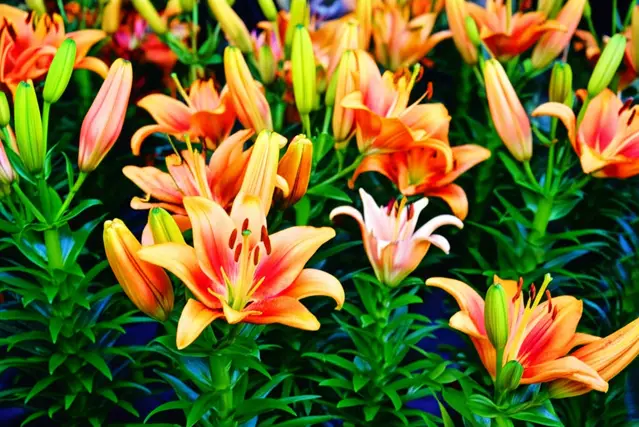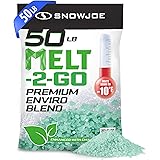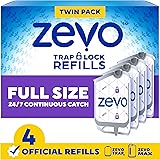So, you’re considering growing lilies in your damp basement? It might sound like a botanical challenge, but with the right knowledge and approach, it’s entirely achievable! Many people underestimate the potential of a basement space, often dismissing it due to its perceived limitations.
However, with advancements in grow lights, humidity control, and a greater understanding of plant needs, even a damp basement can become a thriving indoor garden. In this comprehensive 2024 guide, we’ll delve into the specifics of cultivating beautiful and healthy lilies in this unique environment.
This guide provides you with the most up-to-date information, current trends in indoor gardening, essential statistical data related to basement environments, and relevant regulations concerning indoor plant cultivation. Get ready to transform your basement from a forgotten space into a blooming oasis!
Understanding the Challenges of a Damp Basement Environment
Before diving into the how-to, it’s crucial to understand the specific challenges that a damp basement presents to lily cultivation. Basements, by their very nature, are often prone to higher humidity levels, poor ventilation, and limited natural light. These factors can significantly impact the health and growth of your lilies. Let’s examine each of these challenges in detail:
High Humidity and Its Effects
High humidity is perhaps the most significant obstacle. Basements often have poor air circulation and are in direct contact with the ground, leading to elevated moisture levels. Excessive humidity can create a breeding ground for fungal diseases, such as botrytis blight (gray mold) and root rot, both of which can be devastating to lilies. According to a 2023 report by the EPA, indoor humidity levels should ideally be between 30% and 50%. Basements often exceed this range, sometimes reaching 70% or higher.
The impact of high humidity on lilies includes:

Lily basement care
- Increased risk of fungal infections: Damp conditions favor the growth of mold and mildew, leading to plant diseases.
- Reduced transpiration: High humidity inhibits the plant’s ability to transpire (release water), potentially causing nutrient deficiencies and stunted growth.
- Attraction of pests: Some pests, like fungus gnats, thrive in damp environments.
Poor Ventilation
Compounding the humidity issue is often poor ventilation. Basements frequently lack adequate airflow, which can trap moisture and prevent the leaves from drying properly. Stagnant air also reduces the plant’s ability to absorb carbon dioxide, which is essential for photosynthesis.
A study by the American Society of Heating, Refrigerating and Air-Conditioning Engineers (ASHRAE) found that proper ventilation can reduce indoor mold growth by up to 80%.
Consequences of poor ventilation for lilies include:
- Increased humidity: Lack of airflow exacerbates humidity issues, creating a perpetual cycle of dampness.
- Reduced photosynthesis: Stagnant air limits the availability of CO2, hindering plant growth.
- Higher risk of disease: Poor ventilation allows fungal spores to settle on leaves and stems, increasing the risk of infection.
Limited Natural Light
Most basements receive little to no natural sunlight, which is vital for plant growth. Lilies, like all plants, require light to carry out photosynthesis, the process by which they convert light energy into chemical energy. Without sufficient light, lilies will become leggy (stretched and weak), produce fewer blooms, and eventually decline. The intensity and duration of light exposure are crucial factors. Most lilies require at least 6 hours of direct sunlight or its equivalent in artificial light.
Effects of insufficient light on lilies:
- Leggy growth: Plants stretch towards any available light source, resulting in weak stems and sparse foliage.
- Reduced blooming: Insufficient light inhibits flower bud development, leading to fewer or no blooms.
- Pale leaves: Chlorophyll production is reduced, causing leaves to appear pale or yellowish.
- Weakened overall health: Lack of energy weakens the plant’s defenses, making it more susceptible to diseases and pests.
Choosing the Right Lily Varieties for a Basement
Not all lilies are created equal when it comes to their tolerance for indoor conditions. Selecting the right variety is crucial for success in a damp basement. Look for lilies that are compact, adaptable to lower light conditions, and less prone to fungal diseases. Here are some excellent choices:
Asiatic Lilies
Asiatic lilies are known for their vibrant colors, upright growth habit, and relatively low fragrance. They are generally more tolerant of indoor conditions than other lily types, making them a good choice for beginners. Asiatic lilies also tend to bloom earlier in the season, providing a splash of color in your basement garden relatively quickly.
- Advantages: Early blooming, compact size, wide range of colors, relatively easy to grow.
- Considerations: Less fragrant than other lily types, may still require supplemental lighting in a basement.
- Popular Varieties: ‘Connecticut King’ (yellow), ‘Tiny Padhye’ (orange), ‘Red Twin’ (red).
Dwarf or Patio Lilies
These are specifically bred to be compact and well-suited for container gardening. Their smaller size makes them ideal for basements where space may be limited. Patio lilies often have a more branching habit, producing more blooms on a single plant. They are also generally more disease-resistant than taller varieties.
- Advantages: Compact size, ideal for containers, often more disease-resistant, profuse blooms.
- Considerations: May require staking if blooms become heavy, still needs adequate light.
- Popular Varieties: ‘Trendy Leoni’ (pink), ‘Trendy Naranja’ (orange), ‘Trendy Santorini’ (yellow).
Oriental Lilies (with Caution)
While Oriental lilies are prized for their intoxicating fragrance and large, showy blooms, they can be more challenging to grow in a basement environment. They are more susceptible to fungal diseases and require more light than Asiatic lilies. If you choose to grow Oriental lilies, select varieties that are known for their disease resistance and provide ample ventilation. The strong fragrance can also be overpowering in a confined space.
- Advantages: Intense fragrance, large and showy blooms, beautiful colors.
- Considerations: More susceptible to fungal diseases, requires more light, strong fragrance may be overpowering.
- Popular Varieties (Disease-Resistant): ‘Starfighter’, ‘Casa Blanca’ (white – but prone to botrytis in high humidity), ‘Siberia’ (white).
Table: Lily Variety Comparison for Damp Basements
| Lily Variety | Light Requirements | Humidity Tolerance | Fragrance | Size | Disease Resistance | Considerations for Basement |
|---|---|---|---|---|---|---|
| Asiatic Lilies | Moderate to High | Moderate | Low | 1-3 feet | Good | Generally easy to grow, supplemental lighting may be needed. |
| Dwarf/Patio Lilies | Moderate to High | Moderate | Low to Moderate | 1-2 feet | Good | Ideal for containers, compact size is well-suited for basements. |
| Oriental Lilies | High | Low | High | 2-4 feet | Moderate | More challenging, requires excellent ventilation and disease control. Fragrance can be strong. |
Setting Up Your Basement for Lilies: Essential Preparations
Creating a suitable environment for your lilies is critical. This involves addressing the challenges of humidity, ventilation, and light that are common in basements. Here’s a step-by-step guide to preparing your basement:
Addressing Humidity Issues
Controlling humidity is paramount. Here’s how to tackle it:
- Invest in a Dehumidifier: This is perhaps the most effective way to lower humidity levels. Choose a dehumidifier with sufficient capacity for the size of your basement. Regularly monitor the humidity levels with a hygrometer and adjust the dehumidifier accordingly. According to Energy Star, a dehumidifier should be able to reduce humidity levels in a basement by 10-15% within a few hours. Look for Energy Star-certified models for greater efficiency.
- Improve Ventilation: Install fans to circulate air. Even a small oscillating fan can make a big difference. Consider installing a ventilation system that exhausts humid air to the outside. Ensure there’s sufficient space around your lilies for air to circulate freely.
- Watering Practices: Water lilies early in the day so that the foliage has time to dry before nightfall. Avoid overwatering, as this contributes to humidity. Use well-draining potting mix to prevent water from accumulating around the roots.
- Seal Cracks and Leaks: Identify and seal any cracks in the foundation or walls that may be allowing moisture to enter the basement. Repair any leaky pipes or appliances promptly. Consider using a waterproof sealant on basement walls.
Read More: Understanding The Yellow Liquid In Aloe Vera: Benefits And Uses
Providing Adequate Lighting
Since natural light is limited, supplemental lighting is a must. Here’s what you need to know:
- Choose the Right Grow Lights: LED grow lights are the most energy-efficient and long-lasting option. Full-spectrum LED lights provide the entire range of light needed for plant growth. Fluorescent grow lights are a less expensive option but are less energy-efficient and need to be replaced more frequently. High-pressure sodium (HPS) lights are very powerful but generate a lot of heat and are not ideal for enclosed spaces like basements. A 2024 trend is the use of “smart” grow lights that can be controlled via smartphone apps, allowing you to adjust the light spectrum and intensity based on the plant’s needs.
- Light Intensity and Duration: Lilies typically need 14-16 hours of light per day. The intensity of the light will depend on the type of grow light and the distance from the plants. Start with a lower intensity and gradually increase it as needed. Monitor your lilies for signs of light stress, such as bleaching or leaf burn.
- Placement and Distance: Position the grow lights so that they are evenly distributed over the plants. The distance between the light and the plants will depend on the intensity of the light. As a general rule, LED grow lights should be placed 12-18 inches from the plants. Fluorescent grow lights can be placed closer, about 6-12 inches.
- Light Timer: Use a timer to automate the on/off cycle of the grow lights. This ensures that your lilies receive consistent light exposure and eliminates the need for manual operation.
Choosing the Right Containers and Soil
The right containers and soil are essential for healthy root development and drainage.
- Container Size and Material: Choose pots that are at least 6-8 inches in diameter and depth. Lilies prefer to have their roots slightly crowded, so don’t choose pots that are too large. Clay pots are porous and allow for better drainage, but they can dry out more quickly. Plastic pots are less porous and retain moisture better, but they can also lead to overwatering. Consider using fabric pots, which provide excellent aeration and drainage.
- Drainage: Ensure that the pots have adequate drainage holes to prevent water from accumulating at the bottom. Place a layer of gravel or pebbles at the bottom of the pot to improve drainage.
- Potting Mix: Use a well-draining potting mix that is specifically formulated for container gardening. Avoid using garden soil, as it can be too heavy and compact. A good potting mix should contain a blend of peat moss, perlite, and vermiculite. Consider adding a small amount of compost to provide additional nutrients. You can also add horticultural charcoal to the potting mix to improve drainage and absorb excess moisture.
Creating a Pest and Disease Management Plan
A proactive approach to pest and disease control is essential for keeping your lilies healthy.
- Prevention is Key: Start with healthy, disease-free bulbs. Inspect the bulbs carefully before planting and discard any that show signs of rot or mold. Maintain good hygiene by cleaning your gardening tools regularly and removing any dead or decaying leaves from the plants.
- Monitor Regularly: Inspect your lilies regularly for signs of pests or diseases. Look for aphids, spider mites, mealybugs, and other common pests. Check the leaves for spots, discoloration, or signs of fungal growth.
- Organic Pest Control: If you detect pests, try using organic pest control methods first. Insecticidal soap, neem oil, and horticultural oil are effective against many common pests. You can also introduce beneficial insects, such as ladybugs, to control aphids and other pests.
- Fungicide Application: If you detect signs of fungal disease, such as botrytis blight or root rot, apply a fungicide according to the manufacturer’s instructions. Choose a fungicide that is specifically formulated for lilies.
- Quarantine New Plants: Before introducing new lilies to your basement garden, quarantine them for a few weeks to ensure that they are free of pests and diseases.
Planting and Growing Your Lilies
Now that you’ve prepared your basement environment, it’s time to plant your lilies. Follow these steps for successful planting and growth:
Planting Lily Bulbs
- Timing: Lily bulbs can be planted in the fall or early spring. Fall planting allows the bulbs to develop roots before the winter, resulting in earlier blooms in the spring. Spring planting is also successful, but the blooms may be delayed. In a basement environment, you have more flexibility with planting time since you can control the temperature and light.
- Depth: Plant the lily bulbs at a depth of 4-6 inches, depending on the size of the bulb. The top of the bulb should be just below the surface of the potting mix.
- Spacing: Space the bulbs about 6-8 inches apart.
- Watering: Water the bulbs thoroughly after planting. Keep the potting mix moist but not soggy.
- Fertilizing: Apply a slow-release fertilizer at planting time. Choose a fertilizer that is specifically formulated for lilies or flowering plants.
Watering and Fertilizing
- Watering: Water lilies regularly, especially during the growing season. Allow the top inch of the potting mix to dry out between waterings. Avoid overwatering, as this can lead to root rot. Water early in the day to allow the foliage to dry before nightfall. Adjust watering frequency based on the humidity levels in your basement.
- Fertilizing: Fertilize lilies every 2-4 weeks during the growing season with a balanced liquid fertilizer. Dilute the fertilizer to half strength to avoid burning the roots. Reduce or stop fertilizing during the dormant period. A trending practice in 2024 is the use of mycorrhizal fungi when planting, which helps the lilies absorb nutrients more efficiently.
Temperature and Humidity Control
- Temperature: Lilies prefer temperatures between 60-75°F (15-24°C). Avoid exposing them to extreme temperature fluctuations.
- Humidity: Maintain humidity levels between 30-50%. Use a dehumidifier to lower humidity if necessary.
- Air Circulation: Ensure good air circulation to prevent fungal diseases. Use fans to circulate air.
Supporting Your Lilies
- Staking: Taller lily varieties may need staking to prevent them from toppling over, especially when the blooms are heavy. Use bamboo stakes or other supports to provide stability.
- Deadheading: Remove spent blooms to encourage the plant to produce more flowers. Cut the stem back to the next set of leaves.
Dealing with Pests and Diseases
Even with preventative measures, pests and diseases can sometimes occur. Here’s how to address them:
- Aphids: Aphids are small, sap-sucking insects that can cause distorted growth and yellowing leaves. Spray aphids with insecticidal soap or neem oil.
- Spider Mites: Spider mites are tiny pests that can cause stippling on the leaves. Increase humidity and spray the plants with insecticidal soap or horticultural oil.
- Fungus Gnats: Fungus gnats are small, flying insects that breed in moist potting mix. Allow the potting mix to dry out between waterings and use sticky traps to catch the adults.
- Botrytis Blight (Gray Mold): Botrytis blight is a fungal disease that causes gray mold on the leaves and flowers. Improve air circulation, reduce humidity, and apply a fungicide.
- Root Rot: Root rot is a fungal disease that causes the roots to rot. Avoid overwatering and use a well-draining potting mix. If root rot occurs, repot the plant in fresh potting mix and remove any affected roots.
Encouraging Blooming in a Basement Environment
Getting your lilies to bloom in a basement environment requires a bit of finesse. Here’s what to focus on:
Light Management for Bloom Production
- Consistent Light Exposure: As mentioned previously, provide 14-16 hours of light per day.
- Light Spectrum: Ensure your grow lights provide a full spectrum of light, especially red and blue wavelengths, which are crucial for flowering.
- Photoperiod Sensitivity: Some lily varieties are sensitive to the length of the day. Research the specific needs of your lilies to determine if you need to adjust the light duration to encourage blooming.
Temperature Fluctuations for Bud Development
- Nighttime Cooling: A slight drop in temperature at night (5-10°F) can stimulate bud development. If possible, lower the thermostat slightly at night.
- Avoid Extreme Fluctuations: While nighttime cooling is beneficial, avoid sudden and drastic temperature changes, as this can stress the plants.
Fertilizing for Bloom Promotion
- Phosphorus Boost: Use a fertilizer that is higher in phosphorus (the middle number in the N-P-K ratio) to promote blooming. Bone meal is a good organic source of phosphorus.
- Avoid Over-Nitrogenizing: Too much nitrogen can promote leafy growth at the expense of flowers.
Dormancy and Reblooming
Many lily varieties require a period of dormancy to rebloom. Here’s how to manage dormancy in a basement environment:
- Reduce Watering and Fertilizing: After the blooming period, gradually reduce watering and stop fertilizing.
- Cooler Temperatures: Move the lilies to a cooler location in the basement (around 50-55°F) for 8-12 weeks.
- Minimal Light: Provide minimal light during the dormancy period.
- Resume Care: After the dormancy period, resume regular watering and fertilizing, and move the lilies back to their normal location under the grow lights.
Troubleshooting Common Problems
Even with the best care, problems can arise. Here’s a guide to troubleshooting common issues:
Yellowing Leaves
- Overwatering: Allow the potting mix to dry out slightly between waterings.
- Nutrient Deficiency: Fertilize with a balanced liquid fertilizer.
- Insufficient Light: Increase light exposure.
- Pest Infestation: Inspect for pests and treat accordingly.
Leggy Growth
- Insufficient Light: Increase light exposure.
- Over-Fertilizing with Nitrogen: Reduce nitrogen fertilizer.
Lack of Blooming
- Insufficient Light: Increase light exposure.
- Incorrect Fertilizing: Use a fertilizer that is higher in phosphorus.
- Lack of Dormancy: Provide a dormancy period.
- Temperature Issues: Ensure proper day/night temperature fluctuations.
Fungal Diseases
- Poor Air Circulation: Improve air circulation.
- High Humidity: Reduce humidity with a dehumidifier.
- Overwatering: Allow the potting mix to dry out slightly between waterings.
- Treat with Fungicide: Apply a fungicide according to the manufacturer’s instructions.
Pest Infestations
- Identify the Pest: Determine the type of pest infestation.
- Isolate the Plant: Quarantine the affected plant to prevent the spread of pests to other plants.
- Treat with Insecticide: Use insecticidal soap, neem oil, or horticultural oil to treat the infestation.
Advanced Techniques for Lily Cultivation in Damp Basements
For those looking to take their lily cultivation to the next level, here are some advanced techniques to consider:
Hydroponics
Hydroponics is a method of growing plants without soil, using nutrient-rich water solutions. This can be a particularly effective technique in a damp basement environment because it eliminates the risk of soil-borne diseases and allows for precise control over nutrient delivery. Deep water culture (DWC) and nutrient film technique (NFT) are two hydroponic systems that can be adapted for growing lilies. While hydroponics requires a higher initial investment and more technical knowledge, the benefits can include faster growth, higher yields, and reduced risk of disease.
Aquaponics
Aquaponics is a system that combines aquaculture (raising fish) and hydroponics. The fish waste provides nutrients for the plants, and the plants filter the water for the fish. This creates a closed-loop ecosystem that is both sustainable and efficient. Aquaponics can be a challenging but rewarding technique for growing lilies in a damp basement. It requires careful management of the water chemistry and nutrient balance.
Air Circulation Systems
Beyond simple fans, consider investing in a more sophisticated air circulation system. Inline fans connected to ductwork can be used to exhaust humid air from the basement and bring in fresh air from outside. These systems can be particularly effective in large basements with poor ventilation. Look into systems with HEPA filters to further purify the air.
Automated Monitoring and Control Systems
With advancements in technology, you can now automate many aspects of lily cultivation. Sensors can monitor temperature, humidity, light levels, and soil moisture, and automatically adjust these parameters as needed. These systems can be controlled via smartphone apps, allowing you to monitor and manage your basement garden from anywhere. This can be invaluable in a damp basement environment where maintaining optimal conditions is crucial.
Current Trends and Innovations in Indoor Lily Growing (2024)
The world of indoor gardening is constantly evolving. Here are some of the latest trends and innovations in lily cultivation:
LED Grow Light Technology
LED grow lights are becoming increasingly efficient and affordable. New LED lights offer customizable spectrum control, allowing you to fine-tune the light to the specific needs of your lilies at different stages of growth. Quantum board LEDs are gaining popularity for their high efficiency and even light distribution.
Smart Gardening Systems
Smart gardening systems are becoming more sophisticated and user-friendly. These systems can automate watering, fertilizing, and light control, making it easier to grow lilies indoors. Many systems also offer remote monitoring and control via smartphone apps.
Vertical Farming
Vertical farming is a technique that involves growing plants in vertically stacked layers. This can be an efficient way to maximize space in a basement environment. Vertical farming systems often incorporate hydroponics or aquaponics.
Biocontrol Agents
Biocontrol agents, such as beneficial bacteria and fungi, are becoming increasingly popular as a natural way to control pests and diseases. These agents can help to promote plant health and reduce the need for chemical pesticides and fungicides. A key trend is the integration of these agents from the start, rather than waiting for a problem to arise. This proactive approach boosts the lilies’ natural defenses.
Sustainability
Sustainability is a growing concern in all areas of horticulture. Gardeners are increasingly looking for ways to reduce their environmental impact by using organic fertilizers, conserving water, and recycling materials. Composting kitchen scraps and yard waste can provide a valuable source of nutrients for your lilies. Many are now utilizing rainwater harvesting systems to minimize water usage in their basement gardens.
Regulations and Guidelines for Indoor Plant Cultivation
Before embarking on your basement lily growing adventure, it’s essential to be aware of any relevant regulations and guidelines. These can vary depending on your location and the specific types of plants you are growing. While general ornamental lilies are typically not restricted, understanding the potential rules is still prudent.
Local Zoning Laws
Check your local zoning laws to see if there are any restrictions on indoor plant cultivation. Some municipalities may have regulations regarding the size or type of plants that can be grown indoors.
Homeowners Association (HOA) Rules
If you live in a community with a homeowners association, be sure to review the HOA rules to see if there are any restrictions on indoor gardening. Some HOAs may have rules regarding the visibility of plants from the exterior of the property.
Building Codes
Ensure that your basement meets all applicable building codes. This includes requirements for ventilation, electrical safety, and fire safety. Overloading electrical circuits with grow lights and other equipment can be a fire hazard. It’s best to consult with a qualified electrician to ensure that your basement is wired safely.
Pesticide Regulations
Be aware of any regulations regarding the use of pesticides. Some jurisdictions may restrict the use of certain types of pesticides, even indoors. Always follow the manufacturer’s instructions when using pesticides and take precautions to protect yourself and your family. As mentioned earlier, consider using organic pest control methods whenever possible.
Permitting Requirements
In some cases, you may need to obtain a permit to grow plants indoors, especially if you are using a large amount of electricity or water. Check with your local government to see if any permits are required.
Real-World Examples of Successful Basement Lily Gardens
To inspire you and demonstrate that it’s indeed possible, let’s look at some real-world examples of successful basement lily gardens:

damp basement lilies
The Urban Oasis
Sarah, a resident of a small apartment in Chicago, transformed her damp basement into a thriving garden filled with Asiatic and dwarf lilies. She utilized LED grow lights on timers and a small dehumidifier to maintain optimal conditions. Sarah’s success stems from her meticulous monitoring of humidity levels and her proactive approach to pest control. She reports a consistent blooming cycle throughout the year.
Read More: How To Revive Overwatered Lavender: Save Your Plants!
The Hydroponic Experiment
David, a tech enthusiast from Seattle, set up a hydroponic system in his basement to grow Oriental lilies. He uses a deep water culture (DWC) system and carefully monitors the pH and nutrient levels of the water. David’s lilies are known for their large, vibrant blooms and intense fragrance. He shares his experiences and tips on his gardening blog, inspiring others to try hydroponic lily cultivation.
The Sustainable Sanctuary
Maria, a passionate gardener from Denver, created a sustainable basement garden that features lilies as well as other vegetables and herbs. She uses rainwater harvesting to water her plants and composts kitchen scraps to provide nutrients. Maria’s basement garden is a testament to the fact that sustainable gardening practices can be successfully applied even in challenging environments.

lilies humidity control
The Community Project
A group of residents in a community center in New York City transformed a neglected basement into a community garden. They grow lilies along with other plants and donate the produce to local food banks. The project provides a valuable source of fresh food for the community and also serves as a therapeutic space for residents.
Frequently Asked Questions (FAQ)
Here are some frequently asked questions about caring for lilies in a damp basement:
What are the best lily varieties to grow in a damp basement?
Asiatic and dwarf/patio lilies are generally the best choices due to their lower light requirements and greater tolerance for humidity. Oriental lilies can be grown, but they require more careful management.
How can I control humidity in my basement?
Use a dehumidifier, improve ventilation, water plants early in the day, and seal any cracks or leaks in the foundation.
What type of grow lights should I use?
LED grow lights are the most energy-efficient and long-lasting option. Look for full-spectrum LED lights.
How much light do lilies need?
Lilies typically need 14-16 hours of light per day.
What type of soil should I use?
Use a well-draining potting mix that is specifically formulated for container gardening.
How often should I water my lilies?
Water lilies regularly, allowing the top inch of the potting mix to dry out between waterings. Adjust watering frequency based on humidity levels.
How often should I fertilize my lilies?
Fertilize lilies every 2-4 weeks during the growing season with a balanced liquid fertilizer.
How can I prevent fungal diseases?
Improve air circulation, reduce humidity, avoid overwatering, and use a well-draining potting mix.
What should I do if my lilies get pests?
Identify the pest and treat with insecticidal soap, neem oil, or horticultural oil. Consider using beneficial insects.
How do I encourage my lilies to bloom?
Provide adequate light, use a fertilizer that is higher in phosphorus, and ensure proper day/night temperature fluctuations. Provide a dormancy period after blooming.
Can I grow lilies in a completely dark basement?
No, lilies need light for photosynthesis. You must use artificial grow lights.
How do I know if I am overwatering my lilies?
Signs of overwatering include yellowing leaves, wilting, and root rot. The soil will also be constantly soggy.
Conclusion: Your Path to Blooming Success in a Basement Oasis
Growing lilies in a damp basement may seem daunting at first, but with the right knowledge, preparation, and dedication, you can transform your basement into a beautiful and thriving indoor garden. By understanding the challenges of a damp basement environment, choosing the right lily varieties, setting up your basement properly, and following best practices for planting, watering, fertilizing, and pest and disease management, you can achieve blooming success. Don’t be afraid to experiment and learn from your experiences. Indoor gardening is a continuous learning process, and there’s always something new to discover.
Remember to monitor your lilies regularly, adjust your care practices as needed, and stay informed about the latest trends and innovations in indoor gardening. By following these tips, you can create a stunning display of lilies that will brighten up your basement and bring joy to your life. Embrace the challenge, and enjoy the rewarding experience of cultivating these beautiful flowers in an unexpected environment. Remember to research specific regulations in your area regarding plant cultivation and always prioritize safety when working with electrical equipment and chemicals. Refer back to this guide as needed, and don’t hesitate to seek advice from experienced gardeners or horticultural experts. Your journey to a flourishing basement lily garden is just beginning!
The satisfaction of nurturing life in what might otherwise be a forgotten space is immensely rewarding. The vibrant colors and delicate beauty of lilies can transform a damp, dark basement into a vibrant, welcoming sanctuary. As you embark on this endeavor, remember that patience and observation are key. Every basement is unique, and every lily variety has its own specific needs. By paying close attention to your plants and adapting your care routine accordingly, you can create an environment where your lilies can thrive. So, gather your supplies, embrace the challenge, and get ready to witness the magic of blooming lilies in your very own basement oasis. Good luck, and happy gardening!
Auto Amazon Links: No products found.
Perfect Plants Christmas Tree Saver 8oz. | Easy Use Xmas Tree Preserver Food | Have Healthy Green Christmas Trees All Holiday Season
$9.97 (as of December 13, 2025 05:07 GMT +00:00 - More info- Product prices and availability are accurate as of the date/time indicated and are subject to change. Any price and availability information displayed on [relevant Amazon Site(s), as applicable] at the time of purchase will apply to the purchase of this product.
Rocky Mountain Goods Christmas Tree Food - 8 oz Tree Preservative - Reduce Needle Drop - Greener Scent - Fir, Pine, Spruce Trees - Extend Tree Life
$9.95 (as of December 13, 2025 05:07 GMT +00:00 - More info- Product prices and availability are accurate as of the date/time indicated and are subject to change. Any price and availability information displayed on [relevant Amazon Site(s), as applicable] at the time of purchase will apply to the purchase of this product.
FirEver Pure Christmas Tree Food | Preserver Additive & Season Extender for Live Xmas Trees | Keep It Green, Reduce Needle-Drop | Miracle Freshness (8 oz)
$14.99 (as of December 13, 2025 05:07 GMT +00:00 - More info- Product prices and availability are accurate as of the date/time indicated and are subject to change. Any price and availability information displayed on [relevant Amazon Site(s), as applicable] at the time of purchase will apply to the purchase of this product.
VICAMB 39.3 Inch Christmas Tree Watering Funnel,Christmas Tree Watering System Device,Long Tree Watering Funnel Spout for Indoor Outdoor Xmas Tree
$16.99 (as of December 13, 2025 05:07 GMT +00:00 - More info- Product prices and availability are accurate as of the date/time indicated and are subject to change. Any price and availability information displayed on [relevant Amazon Site(s), as applicable] at the time of purchase will apply to the purchase of this product.
EZMeetU Christmas Tree Watering Funnel, 47 Inch Flower Shape Adjustable 6 Section Design, Christmas Tree Watering System, Christmas Tree Waterer, Long Funnel Wide Opening Reusable, Plant Watering Tool
$16.99 (as of December 13, 2025 05:07 GMT +00:00 - More info- Product prices and availability are accurate as of the date/time indicated and are subject to change. Any price and availability information displayed on [relevant Amazon Site(s), as applicable] at the time of purchase will apply to the purchase of this product.
Snow Joe Premium Enviro Blend Ice Melt, Green-Coated Deicer Crystals, 50 lb - Safer Melter for Vegetation, Concrete & Metals w/ Anti-Corrosion Calcium Magnesium Acetate
$32.97 (as of December 12, 2025 19:27 GMT +00:00 - More info- Product prices and availability are accurate as of the date/time indicated and are subject to change. Any price and availability information displayed on [relevant Amazon Site(s), as applicable] at the time of purchase will apply to the purchase of this product.
Muddy Mat® Shown on TV Super Absorbent Microfiber Dog Door Mat for Muddy Paws, Non-Slip Washable Pet Rug, Quick Dry Chenille Entryway Carpet, Machine Washable Indoor Outdoor mat, Grey 30"x19"
$24.95 (as of December 12, 2025 19:27 GMT +00:00 - More info- Product prices and availability are accurate as of the date/time indicated and are subject to change. Any price and availability information displayed on [relevant Amazon Site(s), as applicable] at the time of purchase will apply to the purchase of this product.
ivtivfu Rolling Grill Basket, Removable Wooden Handle, 304 Stainless Steel, Nesting BBQ Tools, Smoker Grilling Accessories for Vegetable, Outdoor Cooking Camping, Birthday Gifts for Men Dad Husband
$25.99 (as of December 12, 2025 19:27 GMT +00:00 - More info- Product prices and availability are accurate as of the date/time indicated and are subject to change. Any price and availability information displayed on [relevant Amazon Site(s), as applicable] at the time of purchase will apply to the purchase of this product.
XXXFLOWER Plant Terrarium with Wooden Stand, Air Planter Bulb Glass Vase Metal Swivel Holder Retro Tabletop for Hydroponics Home Garden Office Decoration - 3 Bulb Vase
$18.98 (as of December 12, 2025 19:27 GMT +00:00 - More info- Product prices and availability are accurate as of the date/time indicated and are subject to change. Any price and availability information displayed on [relevant Amazon Site(s), as applicable] at the time of purchase will apply to the purchase of this product.
Zevo Flying Insect Trap Official Refill Cartridges - Fits Both Zevo Trap & MAX Indoor Fly Trap - Authentic Trap+Lock Technology to Catch Gnats, House & Fruit Flys (4 Official Refill Cartridges)
$14.97 (as of December 12, 2025 19:27 GMT +00:00 - More info- Product prices and availability are accurate as of the date/time indicated and are subject to change. Any price and availability information displayed on [relevant Amazon Site(s), as applicable] at the time of purchase will apply to the purchase of this product.











